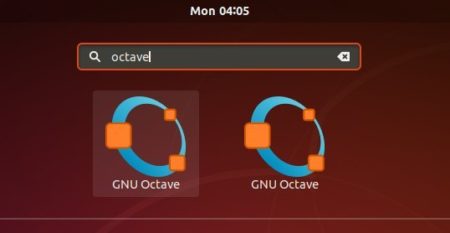

cd /home/softpedia/octave-3.8.2), run the ‘./configure & make’ command to configure and compile the program, and then run the ‘sudo make install’ command to install it.
#Gnu octave 4.4.0 how to run archive
Open a terminal emulator app, run the ‘cd’ command followed by the path to the location of the extracted archive files (e.g. If you're down with that, download the latest source package from Softpedia or from the project’s official homepage (see link at the end of the article), save it on your PC and unpack it. The second method will help you install the latest version of the product, but it involves executing commands in a terminal emulator. Synaptic Package Manager) of your distribution.

The first one is the easiest and involves searching the “octave” package in the Software Center app (e.g. Two methods are available for installing GNU Octave on a GNU/Linux operating system. These can be written in Octave’s own programming language or in C, C++, Fortran, etc. You can use dynamically loaded modules or user-defined functions to extend GNU Octave. In addition, GNU Octave offers various utilities that allow you to solve common numerical linera algebra problems, manipulate polynomials, integrate ordinary functions, discover the roots of nonlinear equations, as well as to integrate ordinary differential-algebraic and differential equations.

It is compatible with Matlab, a multi-paradigm numerical computing environment, and can be used as a batch-oriented language. The software can be used to numerically solve both linear and nonlinear problems, as well as to perform various numerical experiments. Can be used to numerically solve linear and nonlinear problems GNU Octave is an open source and freely distributed command-line software project that aims to provide a powerful, easy-to-use and extensible high-level language that can be used for handling numerical computations.


 0 kommentar(er)
0 kommentar(er)
